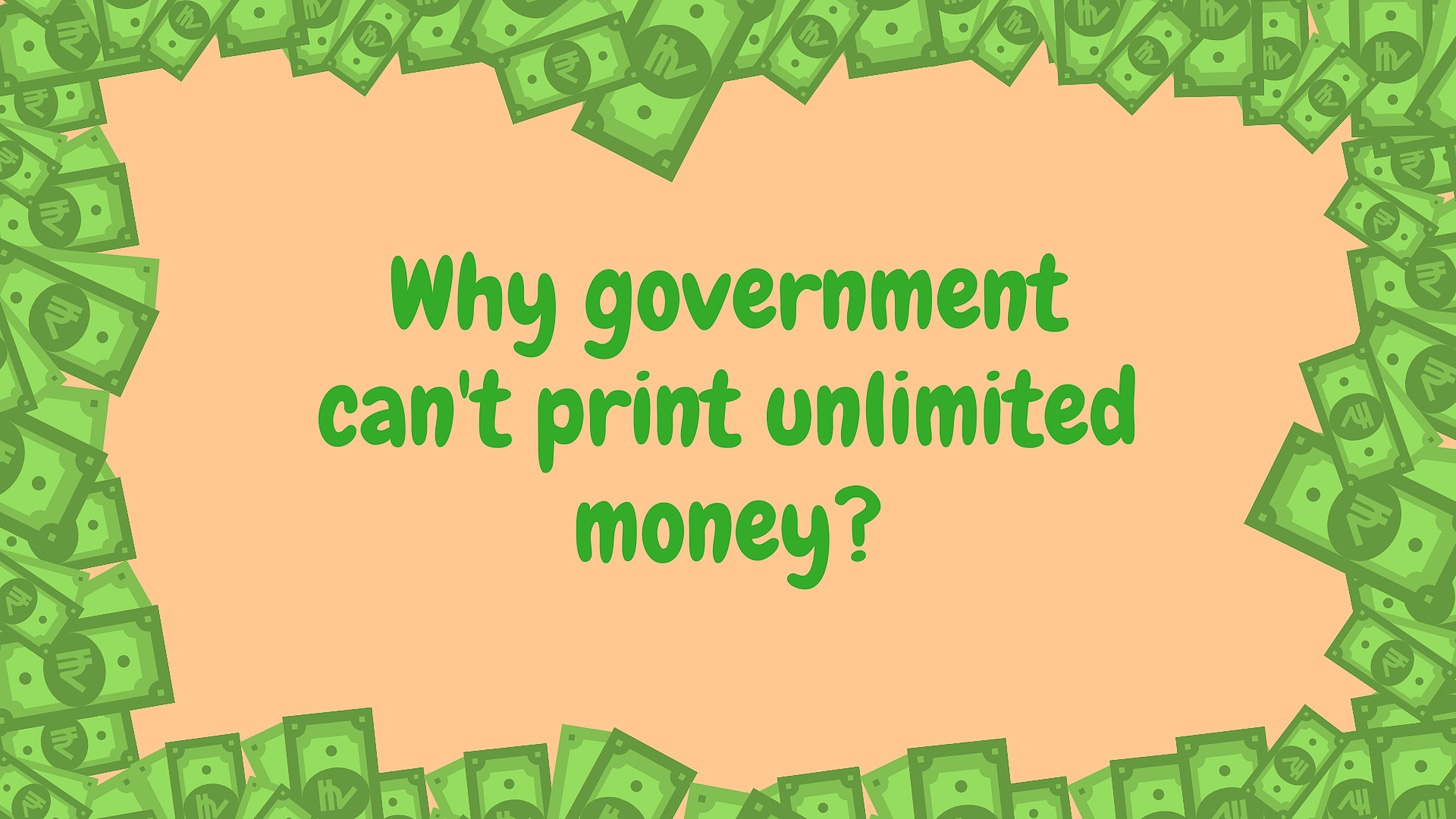Why can't the Government print unlimited money?
If the Government has the ability to print unlimited money, if they can just finish poverty, famine, and every financial setback our country is facing, what is stopping them?
To answer this question in just a word- Inflation. Inflation is the main reason, among many others, that stops the government from printing unlimited currency notes. As there is more money in the economy, the prices of goods and services will also increase; there would be too much money and too few goods and services.
As a result, the purchasing power will automatically decrease as inflation strikes. A hundred rupees will no longer buy you the number of products that you could purchase before inflation.
For example, let us assume that there are two people in the market and each earns Rs. 100. Now, if they were to purchase potatoes that cost Rs.100, both individuals can purchase the potatoes easily. However, if the government begins to print an unlimited amount of money, then, each of them has Rs 200. But the supply of potatoes is unchanged.
Now, since there is more money, the market is bound to increase the prices to meet the increased demand and the same sack of potatoes would now cost Rs. 200. The same would happen with every good and service.
Secondly, GDP would also be affected. GDP is the total worth of products and services generated inside a country's physical borders during a given time period, generally a year. The GDP growth rate is a key indicator of a country's economic health.
Another important aspect that influences the quantity of money that will be printed in the economy is GDP. The government creates money with the same worth that it has gained in its economy, or GDP, to put it another way. Thus, increased economic productivity - GDP raises the value of money in circulation, as each currency unit may be exchanged for more valuable products and services later. It's worth emphasizing that the government provides individuals with the same amount of actual cash as the value it receives from GDP and inflation as a medium of exchange.
Furthermore, if there is more money printed, people will utilize that money in one of three ways:
1. Purchase some products and services. They might make investments in funds and shares or purchase properties.
2. If they have more money than what they need, they would keep that money as savings.
3. Donating the money to a needy person or charity. However, this would not be relevant anymore because everyone would have unlimited money themselves.
Therefore, this would also create an imbalance in the demand and supply in the market. If everyone had money, they would not want to work anymore, which is reasonable since they do not need to work anymore. What would happen if every individual on the planet had a large sum of money in their bank account? Will they continue to function? If this is the case, who will produce and for what reason will they produce?
Even if some people continue to do their jobs of generating products and services for the country, this will result in a drop in output and, as a result, a shortage of supply. Contrastingly, as the value of the currency or money rises, demand for each of these goods and services rises.
Even if we maintain the same level of production or supply (or even no production or supply), the price increases substantially. Even if we try to increase supply, we will need more money because prices for everything have risen, including raw materials, manpower, and equipment.
Thus, once again, this would lead to Inflation or hyperinflation in some situations.
Many countries have experienced hyperinflation due to the printing of unlimited currency. Zimbabwe is a country that has previously suffered substantial hyperinflation. The Zimbabwean dollar is no longer in circulation since the government has officially discontinued it owing to widespread hyperinflation.
Zimbabwe had the second-highest incidence of hyperinflation in history during a decade ago financial crisis. The country's inflation rate in November 2008 reached a stunning 79,600,000,000 percent (essentially a daily inflation rate of 98 percent ).
Every day, prices in Zimbabwe roughly doubled, with products and services costing twice as much the next day. With an unemployment rate of more than 70%, Zimbabwe's economy has almost ceased to function, transforming the country's economy into a barter economy. Numerous economic shocks have been blamed for Zimbabwe's hyperinflation. Political corruption was linked with a poor economy, and the national government boosted the money supply in response to the mounting national debt. There were significant decreases in economic output and exports, and political corruption was combined with an essentially weak economy.
In Zimbabwe, hyperinflation spiraled out of control, forcing the use of a foreign currency (such as the South African rand, Botswana pula, or US dollar) as a means of exchange instead of the Zimbabwean dollar.
Another victim of hyperinflation is Venezuela's economy which began to experience hyperinflation during the first year of Nicolás Maduro's presidency. The leading causes of hyperinflation include heavy money-printing and deficit spending.
As the Venezuelan economic catastrophe became worse, oil prices continued to decrease, worsened by other factors that lowered the Venezuelan oil supply. International investors began to turn elsewhere, causing the bolivar's value to plummet even more.
In these circumstances, creating additional money just worsened the situation. It increased the supply of cash, lowering the value even further. To meet its debts and bills, the government made more money as prices soared. Hyperinflation was caused by this vicious cycle.
In conclusion, Therefore, the government cannot print unlimited money to overcome the financial crisis. It needs to be in balance with the country's total production of goods and services, or else inflation can completely destruct the economy.



